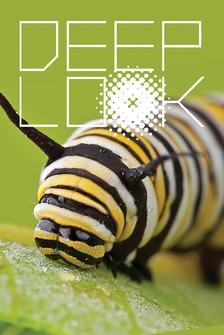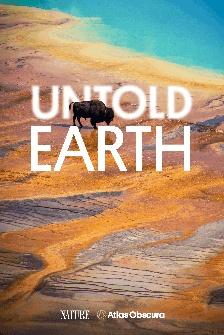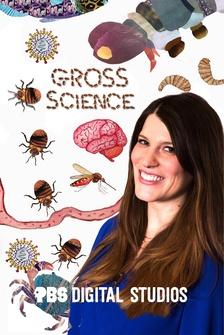- [Alex] Could this little trailer help save the drought-stricken West by bringing more rain and snow to the region?
That's what these engineers think.
They've parked the trailer up here in the mountains of Colorado, in hopes of changing the weather.
And there's dozens of them just like this in use right now.
It might all sound like science fiction, but it's a weather modification technique called cloud seeding, and it was first done successfully as early as the 1940s.
In Colorado, some ski towns were cloud seeding as far back as the '70s.
And it's also been used around the globe.
China's cloud seeding program reportedly had a plan to make clouds rain before they had a chance to float over the Beijing Olympic stadium.
You can find cloud seeding from California to North Dakota.
But how does cloud seeding work?
To learn more, I've come to Colorado to see how seeding works up close and personal.
The night before I arrived, the clouds above me were seeded.
- We are approaching the location of our cloud seeding generator.
- [Alex] Scott Griebling is a water resources engineer for the local water conservancy district.
The locations chosen for these sites had the right elevation and can reach the perfect clouds.
- Our district has come to the conclusion that cloud seeding and weather modification is a very safe and very cost effective way of increasing local water supplies.
- [Alex] So how do you seed a cloud?
- Hey, welcome to our remote generator.
- [Alex] Garrett Cammans is president of a cloud seeding company that operates hundreds of cloud seeding sites.
- And it sounds like you're terraforming or completely changing the climate of an area, but that's not how it works.
- [Alex] Since clouds are basically water vapor, the idea is to release particles into the clouds that will attract water, making it easier for water droplets or snowflakes to form.
They get heavier, and eventually fall to earth instead of staying in the sky.
This Colorado team uses a solution with a chemical called silver iodide, which, when burned, splits into billions of particles per gram.
- Ice is the perfect seeder.
Clouds seed themselves with ice crystals.
Silver iodide is really the closest and similar structure as ice, so that's why we are using silver iodide.
- [Alex] Here, Cammans activates the flame.
It contains a silver iodide solution mixed with propane.
A series of tanks and regulators manage the pressure and exact flow rate of the silver iodide solution.
- A typical storm system will only drop about 10% of its moisture.
We're hoping that the storm system will drop 10 1/2 to 11 1/2% of its moisture.
- [Alex] Okay, but does cloud seeding actually work?
- We would come out with research aircraft and with ground-based radars, and we would basically measure the atmosphere prior to cloud seeding and during cloud seeding.
- [Alex] The landmark Snowie project set out to discover just that.
It took a pretty clever approach.
A plane flying back and forth dropped chemicals into the clouds.
When the team studied the resulting precipitation, they found it had snowed in a zigzag pattern, matching the path of the seeding agent's flow.
Could it have all just been a fluke?
- We were in shock or in disbelief.
And then, of course, we were saying, "Okay, we saw it one day.
Can we repeat it?"
- [Alex] They did the same experiment several more times.
As the wind blew the seeding agent, the same zigzag line of precipitation appeared, which you would never see in a natural snowfall.
- This is revolutionary because we have a hard time quantifying what really comes out from cloud seeding.
- [Alex] So, at least in some situations, cloud seeding can increase precipitation, but is up against challenging odds.
- Concern about reservoir levels.
Over the last 43 years, snowpack has only been this low or lower seven times.
- I'm in a creek.
Snow is crucial to the Rockies.
Because as it gradually melts, water runs downstream, replenishing bodies of water for nearby towns.
That's why Colorado's Water Conservation Board partnered with a water conservancy district to share the cost of hiring a cloud seeding company to seed in the area.
But is cloud seeding safe?
Silver iodide has been used since the 19th century in photo development, and also as an antiseptic in medicine.
Exposure to a large amount of it could even lead to skin and eye irritation.
High levels of silver iodide in one area could be toxic to organisms in our water and soil.
For these reasons and others, state cloud seeding efforts are reported to federal agencies.
- And we wanna be conscious.
We don't really wanna put a lot of silver into the atmosphere.
- [Alex] Over the years, another big concern about cloud seeding has been that it could cause too much precipitation, such as this massive flood in a small town in the UK, which destroyed homes and killed more than 30 people.
While circumstantial, some linked it to a nearby cloud seeding program.
- Cloud seeding programs actually have to play by the rules.
As soon as they have a certain snow depth, they stop seeding in order to prevent floods.
- [Alex] Today, Cammans' company has hundreds of seeding sites, and across the globe, several other nations are testing the technology.
In fact, nearly every meteorologist I spoke with told me to get ready, as they expect cloud seeding, once a big question mark, to increase in frequency.
As for the potential to impact drought, it may be a long time before scientists know for sure.
Even if widely used, it's still difficult to quantify exactly how much additional precipitation comes from seeding a cloud.
We all know about the greenhouse effect, but how many of us understand why it happens?
Our friends at Reactions uncover what's so unique about carbon dioxide that has allowed it to transform our entire planet.
Check out the link in the description, and let them know Nova sent you.














